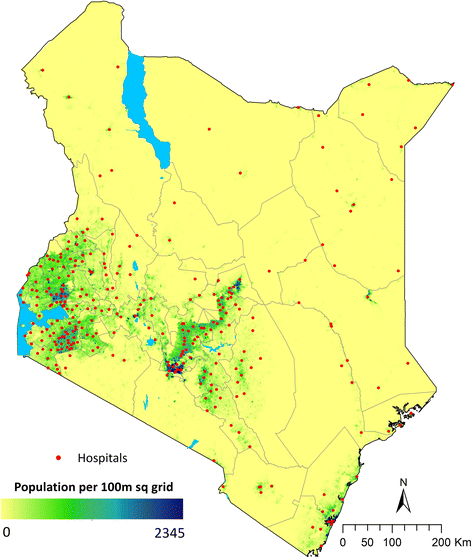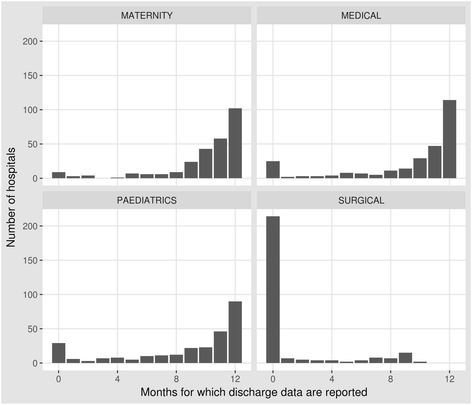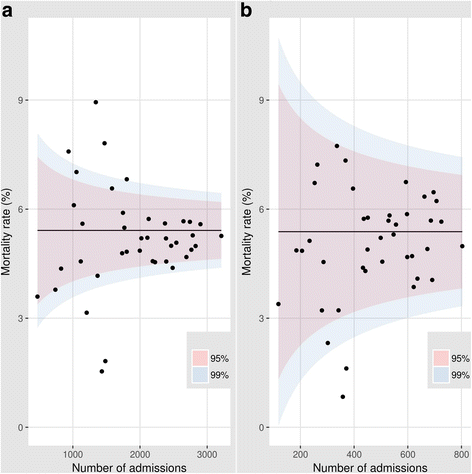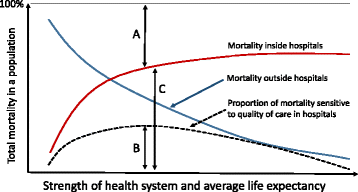Hospital Mortality - a neglected but rich source of information supporting the transition to higher quality health systems in low and middle income countries
- PMID: 29495961
- PMCID: PMC5833062
- DOI: 10.1186/s12916-018-1024-8
Hospital Mortality - a neglected but rich source of information supporting the transition to higher quality health systems in low and middle income countries
Abstract
Background: There is increasing focus on the strength of primary health care systems in low and middle-income countries (LMIC). There are important roles for higher quality district hospital care within these systems. These hospitals are also sources of information of considerable importance to health systems, but this role, as with the wider roles of district hospitals, has been neglected.
Key messages: As we make efforts to develop higher quality health systems in LMIC we highlight the critical importance of district hospitals focusing here on how data on hospital mortality offers value: i) in understanding disease burden; ii) as part of surveillance and impact monitoring; iii) as an entry point to exploring system failures; and iv) as a lens to examine variability in health system performance and possibly as a measure of health system quality in its own right. However, attention needs paying to improving data quality by addressing reporting gaps and cause of death reporting. Ideally enabling the collection of basic, standardised patient level data might support at least simple case-mix and case-severity adjustment helping us understand variation. Better mortality data could support impact evaluation, benchmarking, exploration of links between health system inputs and outcomes and critical scrutiny of geographic variation in quality and outcomes of care. Improved hospital information is a neglected but broadly valuable public good.
Conclusion: Accurate, complete and timely hospital mortality reporting is a key attribute of a functioning health system. It can support countries' efforts to transition to higher quality health systems in LMIC enabling national and local advocacy, accountability and action.
Conflict of interest statement
Ethics approval and consent to participate
Not appropriate for this debate manuscript.
Consent for publication
Not appropriate for this debate manuscript.
Competing interests
KEMRI-Wellcome Trust Research Programme team members receive research funding for work on improvement of health services.
Publisher’s Note
Springer Nature remains neutral with regard to jurisdictional claims in published maps and institutional affiliations.
Figures




References
-
- The SustaInable Development Goals [http://www.un.org/sustainabledevelopment/sustainable-development-goals/]. Accessed 31 Oct 2017.
-
- English M, Lanata C, Ngugi I, Smith PC. The District Hospital. In: Jamison D, Alleyne G, Breman J, Claeson M, Evans D, Jha P, Mills A, Measham A, editors. Disease Control Priorities in Developing Countries - 2nd Edition. Washington DC: World Bank; 2006. pp. 1211–1228.
-
- World Health Organisation. Declaration of Alma-Ata, International Conference on Primary Health Care. Geneva: World Health Organisation; 1978.
Publication types
MeSH terms
Grants and funding
LinkOut - more resources
Full Text Sources
Other Literature Sources
Research Materials

